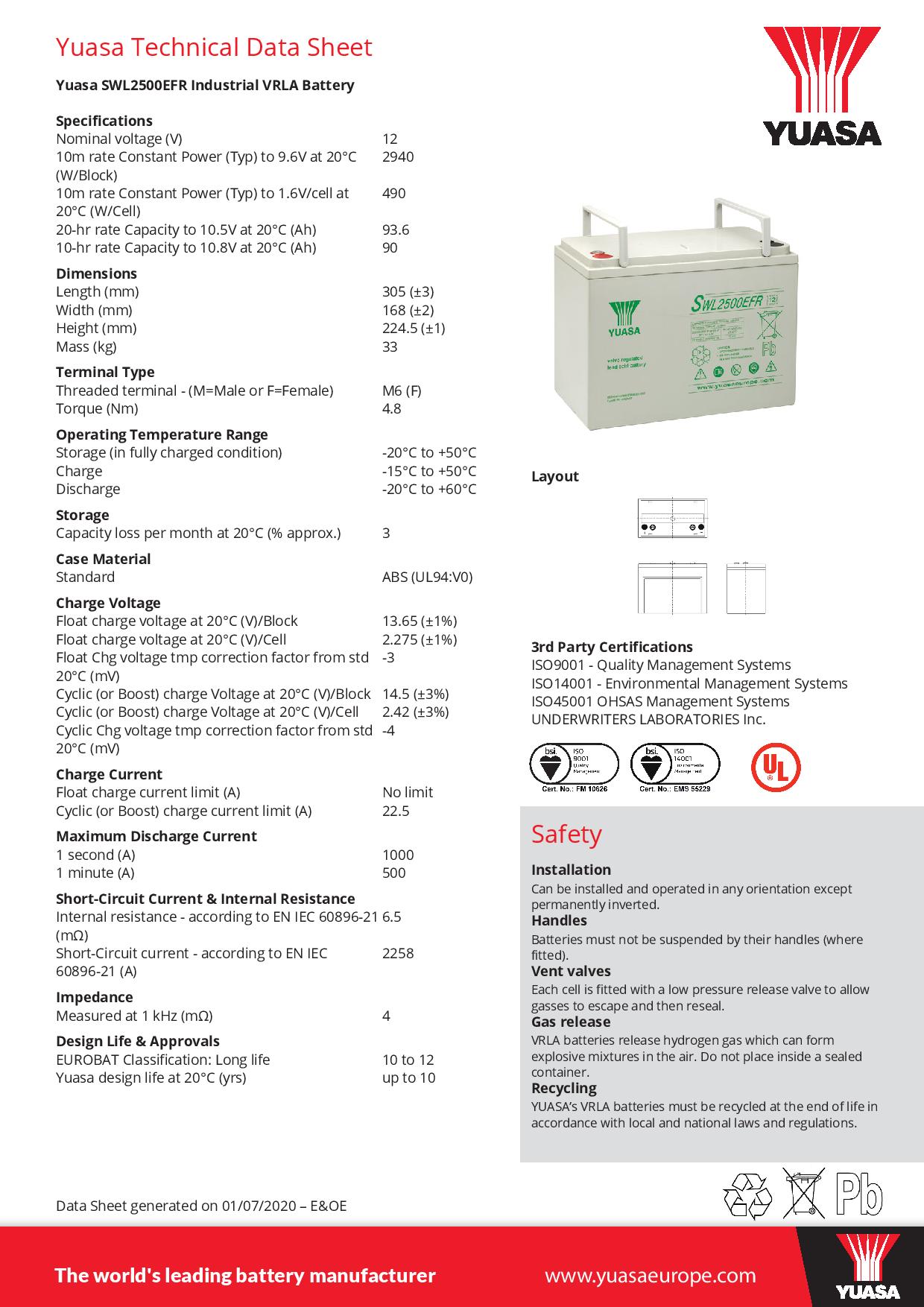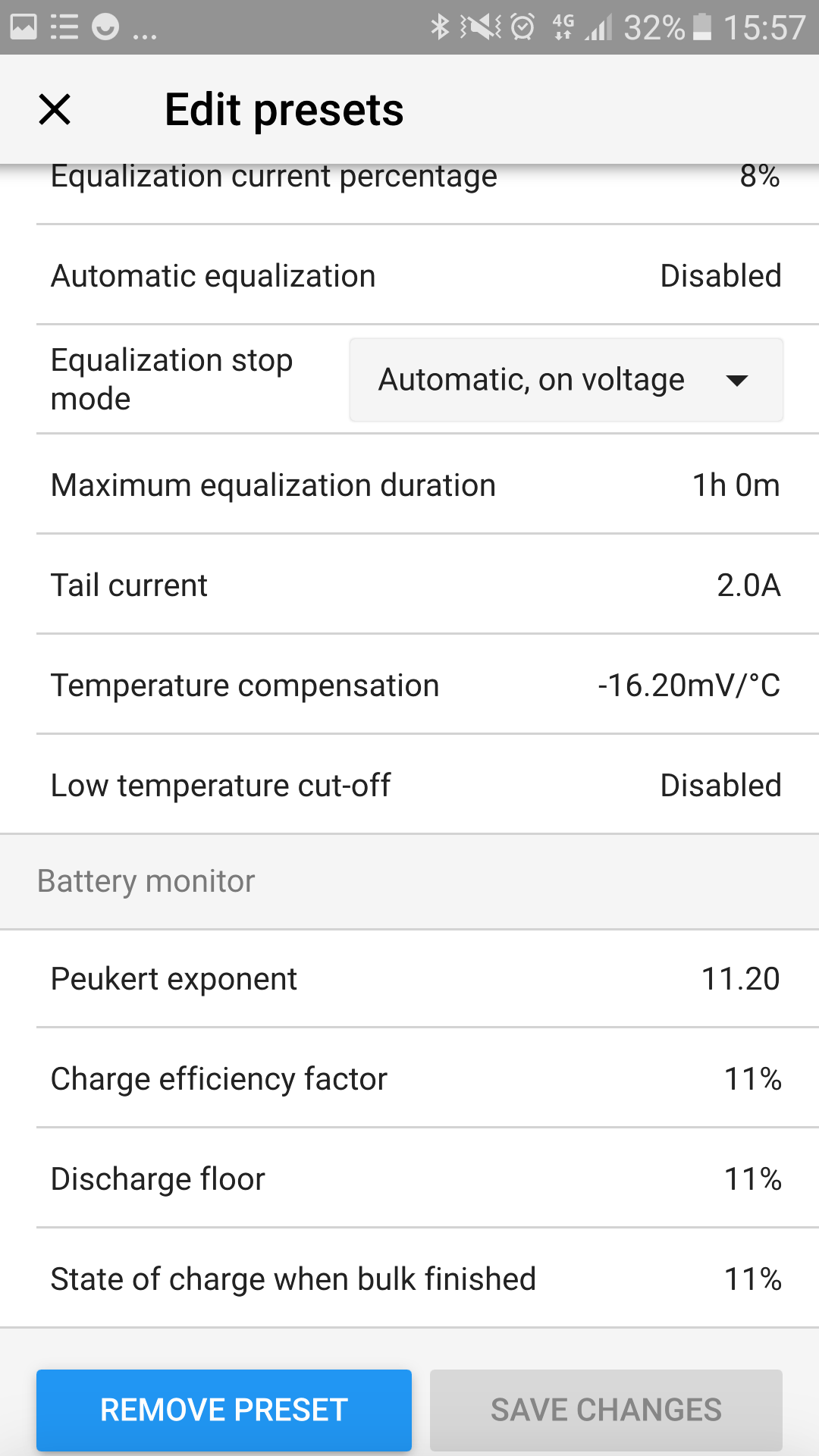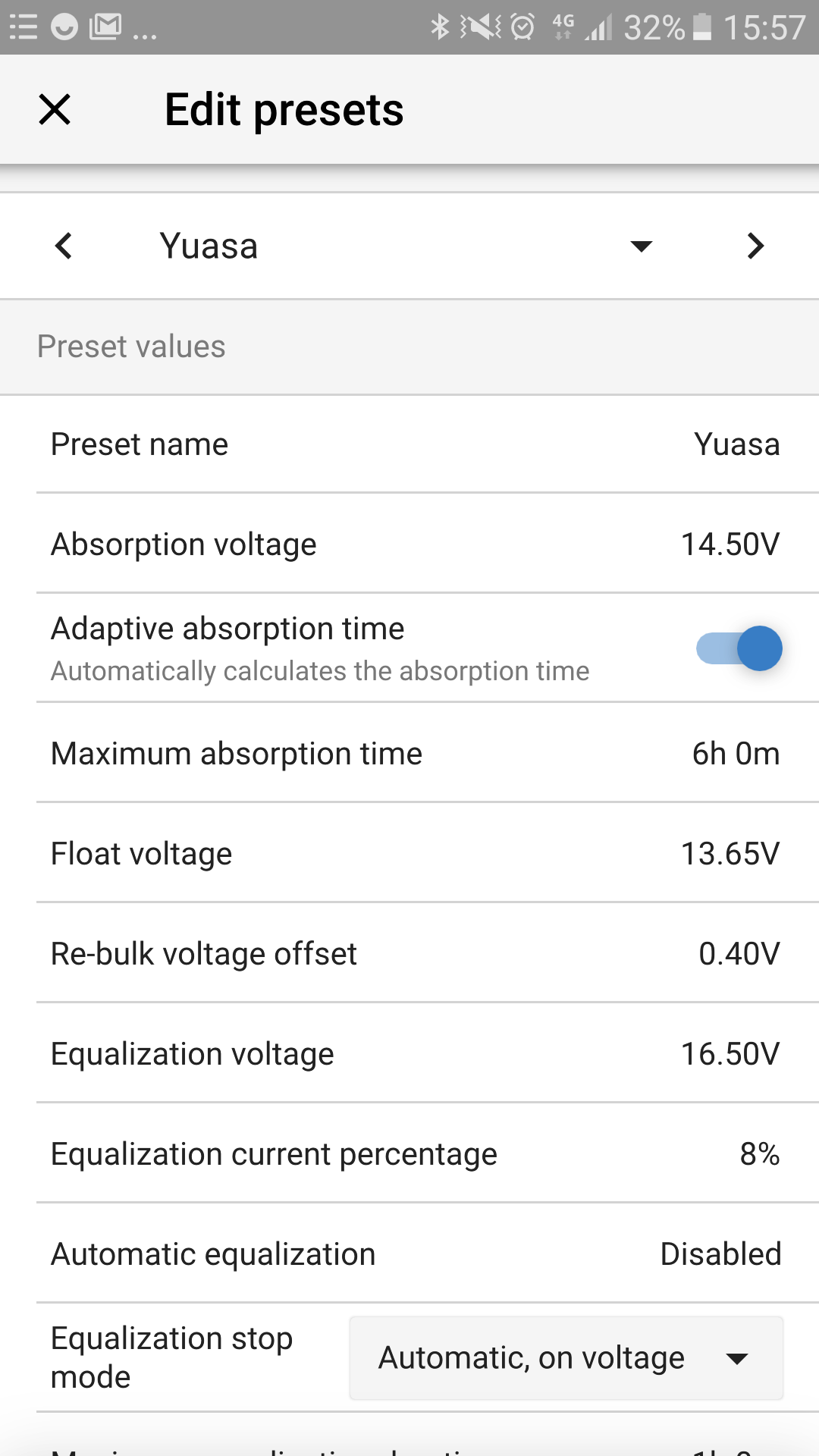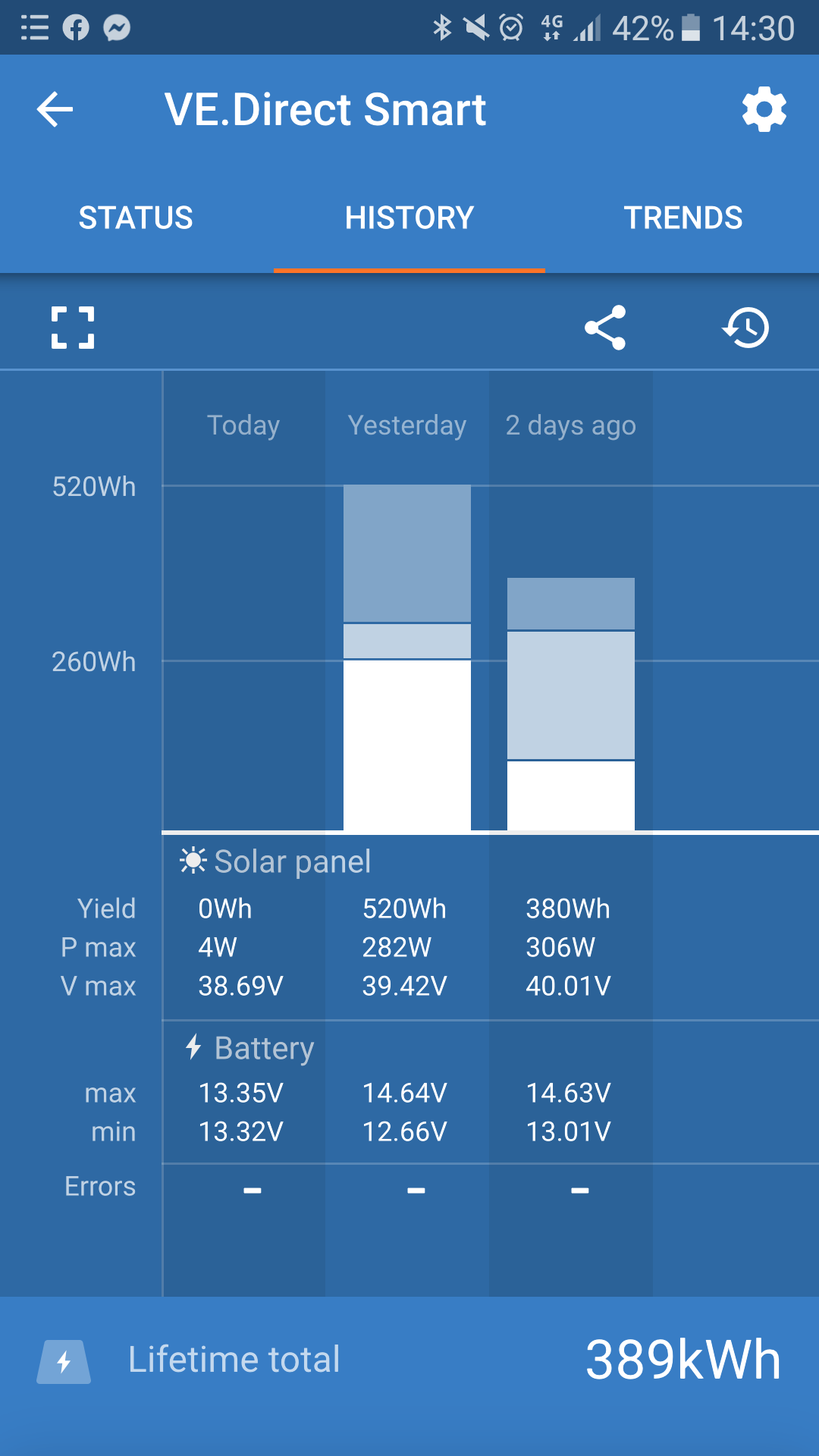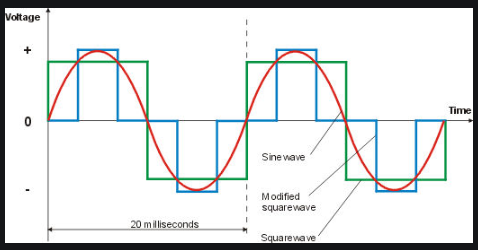Hi Guys/Girls :)
I am new to the victron community, I just aquired a bluesolar MPPT 100/50 and VE.direct bluetooth dongle.
I am trying to set up the battery but I am confused as to what preset to use. can you please help, I have attached my battery specs below.
I have 8x of these batteries wired in parralel and the wiring is balanced :)
what is the cyclic charge? in my case does it mean absoption or equalization.
how shall I set the settings below:
- Maximum absorption time
- Rebulk Voltage offset
- Equalization voltage
- Equalization current percentage
- Automatic equalization
- Maximum Equalization duration
- Tail current
- Temp compensation
and the rest of the settings
I have attached the battery specs below as well as screent victron connect battery setting.
I will very much appreciate if you can help me with the preset.
Many thanks for your help :)
